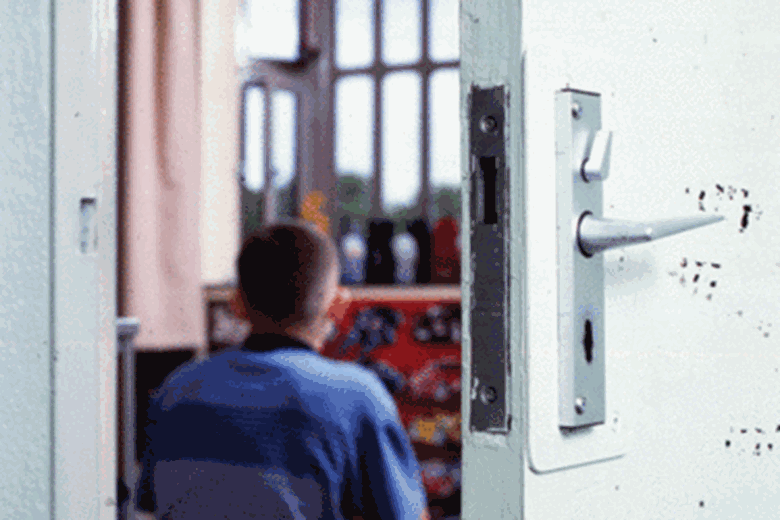Factors behind rise in remand
Nina Jacobs
Tuesday, January 29, 2019
Lack of magistrates and secure children's homes to blame for increase in children in custody on remand.

A recent rise in the use of remand for children suspected of committing offences has been blamed on "misguided" practice by magistrates and a shortage of non-custodial options.
Research from charity Transform Justice reveals child remand rates rose from 21 per cent to 30 per cent between March 2017 and June 2018 - reaching the highest monthly figure for 10 years and despite falling youth custody levels overall.
Its report - Path of little resistance: is pre-trial detention of children really a last resort? - states children are being remanded for very short periods. The average is 24 nights, although 31 per cent last a week or less.
Describing the overuse of remand to custody as a "flagrant breach of children's rights", the report calls for urgent reforms to tackle "systemic failures" in processing young people through the courts.
Penelope Gibbs, director of Transform Justice, says its recommendations, if implemented, could reduce children on remand levels to around five per cent.
Last resort
"Imprisonment for children should be a last resort for the shortest appropriate period," she says. "At trial, most are found not guilty or given a non-custodial sentence.
"This brings into question the use of imprisonment for children accused of crimes, but have not yet had their case heard in court."
While fewer children are remanded than 10 years ago, as a proportion it still remains high. Gibbs believes children are remanded for short periods sometimes "instead" of receiving a custodial sentence.
The report highlights cultural and practice factors that could be responsible for the rise. Among these are treating children as "mini-adults" for remand purposes and instances where remand hearings are presided over by magistrates with no youth training.
Gibbs says bail for young people appearing in court is sometimes opposed by non-specialist prosecutors, and the law applied "mirrors" that used for deciding adult remand cases.
As with adult remand decisions, magistrates and district judges have a tendency to be risk-averse.
The report recommends better training for judges, magistrates, prosecutors and legal advisers in child rights and child welfare, as well as being "more open" to granting bail, even without a change of circumstances.
It also calls for it to be mandatory for at least one youth court magistrate to be sitting on any bench deciding whether a child should be remanded.
Linda Logan, chair of the Magistrates Association's youth court committee, says any decision to remand a child is "incredibly serious" and remand decisions pre-trial "must relate to a real risk".
She welcomes the report's call for more training for adult magistrates who oversee youth remand hearings, many of which are conducted in adult courts.
"We do, however, challenge the assumption that adult magistrates will not be aware that different rules are applied to a child or young person, or have access to resources like the Youth Court Protocol and Youth Court Bench Book when making youth remand decisions," she says.
Logan disputes the report's claim that courts treat children as "mini-adults", citing a lack of evidence to suggest magistrates are applying the law incorrectly in youth remand hearings.
"In light of the expertise and specialist communication skills of youth magistrates, we agree that it is preferable for a youth magistrate to be on a bench that oversees a youth remand hearing in an adult court," she says.
"However, given the limited number of youth magistrates, we would caution against their involvement being a mandatory requirement as this could lead to delays in proceedings or instances where youth defendants have to travel further to appear in court."
Lack of alternatives
Another factor the report highlights is a shortage of suitable non-custodial alternatives such as remand to local authority accommodation (RLAA), which Gibbs says is "woefully under-used".
This is borne out by the fact councils spend three times more on remanding children to custodial settings than their own secure accommodation (see graphics).
Despite RLAA "getting lost in the gap between bail and custodial remand", the report calls for it to be promoted as the default legal option when there is a risk of remand to custody.
"The report clearly illustrates that children's services staff can be hampered by tight timescales and the availability of placements of all types," says Jenny Coles, chair of the Association of Directors of Children's Services (ADCS) families, communities and young people committee.
"However, it is not desirable for children and young people to be remanded to custody for any period of time, particularly where they receive a community sentence.
"ADCS has been involved in the development of a national agreement, led by the Home Office, to minimise the time children spend in police cells," she adds.
Coles says many appearing in court are vulnerable due to exposure to repeated trauma and should be treated as children first.
"Custodial sentences can retraumatise children and young people, and should only be used as a last resort," she adds.




